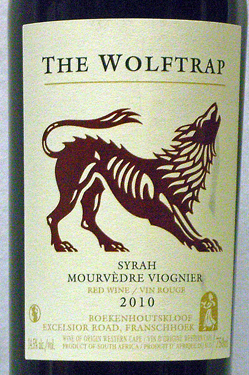We wine writers love to use the term best buy or best value to make sure you pay attention to our reviews, but what does best value really mean when you open that bottle of wine?

If price is seldom a measure of quality, can it possibly be a measure of value?
For years I have considered that best value or best buy as it applies to my wine reviews is not strictly price-driven. Value is all about exceeding expectations -- or, as the marketers like to say, over-delivering in the glass -- and there is no better accolade one could give a wine than that.
Value also means getting the most for your money, so don't be fooled into thinking inexpensive wine can offer value. As to how we interpret value, well it's not the easiest subject to grasp. For example, why couldn't an outstanding $80 Chilean red that costs anywhere from $500 to $1500 less than many highly-treasured Bordeaux be great value as long as your economic standing allowed you choose between classified growth Bordeaux and top Chilean bottles?
It is my experience that wine value falls into three broad categories: at the high end that means wines $75 and well beyond that, at the low end it's that massive category of wine (90-95 per cent) under $25, and perhaps the more significant mid-range of $25 to $75.
Why is the mid-range so significant? Well, if we agree there is a fixed cost to get grapes into a bottle and sell it in a market, it is hard to imagine encountering too many best buys under $15, mainly because most of that price is eaten up by production and shipping costs, not to mention a healthy whack of taxes added in Canada.
On the other hand, if it only costs $10 or $15 per bottle to make the finest wine in the world how can you justify calling a $95 wine good value. In the end it comes down to what's in the glass and having enough experience to draw upon when you consider what else that same money will buy you in the wine world.
You can test your value spotting skills by comparing the best wines of a young or emerging region with those of an old venerable district and do it blind (paper bags will do the trick). If you can't tell the difference between an expensive Napa Valley icon label and a red blend from the Okanagan save yourself $40 to $100 and buy locally. On the other hand don't be afraid to pair a $17 Rhone red against your favourite New World varietal, you may be surprised how much that French blend can deliver even after being shipped half away around the world to B.C.
If there is one caveat in this discussion it may well be that today's best values might not be so affordable in the coming years. The rising level of interest in wine and ease of accessing information via the Internet means there are more and more buyers for less and less wine. That creates another kind of value -- scarcity -- and that kind of value works best when the wine is already in your cellar.
This month Wine Access magazine, where I'm the editor, has released its 2012 International Value Wine Awards results. It's one of the most popular issues of the year because we conduct comprehensive weeklong tastings of the vast under-$25 wine market. There is more information at www.wineaccess.ca.
For today's picks I've reached into my personal archive of wine notes at www.gismondionwine.com and used a calculation that measures price, score and availability to locate six terrific value wines for you to check out in government wine stores
Mezzomondo Salento 2010, Puglia, Italy
Price $10 | Score 88/100
UPC 8032610311346
Fittingly fragrant, the No. 1 pick is 100-per-cent negroamaro, an indigenous grape grown in Apulia. Blackberries, plums, dark chocolate with a savoury undertone overdeliver for the price. So round and fun to drink; it's ridiculous value for $10. You can even age this another three years and it will improve.
Jose Maria Da Fonseca Periquita 2009, Vinho Regional Terras do Sado, Portugal
Price $10 | Score 88/100
UPC 600470204009
Periquita wasn't always a drinkable wine but things have changed in Portugal. There not making New World wine but they are making much better Old World wine, in this case blending castelão, trincadeira and Aragonês. Bright fruit greets your nose with bits of spice and dried herbs. The plate is soft and juicy with more red and black fruits with a cedar and earthy finish.
Terra Andina Cabernet -- Merlot 2010, Region del Valle Central, Chile
Price $10 | Score 87/100
UPC 830212000075
A tasty upgrade on previous editions, albeit in a friendly commercial jacket. The attack is soft with a mix of sweet dark fruits, dried herbs, black olives and cedar plum notes. The tannins are soft. Try this with spaghetti Bolognese or chicken cacciatore.
Marani Mitsvane Dry White N/V, Kakheti, Georgia
Price $12 | Score 87/100
UPC 004867616020220
Expect a clean fresh aromatic Georgian white with baked pear, light marzipan, honey, and apple skin aromas. The attack is elegant, soft and slightly oily with more baked pear, honey, spicy, light lees, quince, orange and guava flavours. Good flavours and balance and, a steal at this price. Try with your favourite Pan Asian dishes.
Boekenhoutskloof The Wolftrap 2010, Western Cape, South Africa
Price $15 | Score 86/100
UPC 746925000564
Meaty, smoky, light barnyard, leather, chocolate, black cherry kirsch with a floral and savoury note. Fresh, round, supple palate with smoked meat, saddle leather, peppery, gamey, floral, black cherry jam, ginger, barnyard and cigar flavours. Seems to have upped the SA, scorched
earth character intensity here but it will likely not bother its many fans. Go with grilled meats.
Pierre Sparr Extrem Riesling 2010, Alsace, France
Price $20 | Score 89/100
UPC 003263530020420
Another delicious version of this cutting edge Alsace Riesling, with a fresh floral nose and intriguing honey, pear, citrus aromas. The attack is dry and lively with elegance and fine acidity. The plate is steely with honey, citrus, guava flavours that finish long. All under screw cap, this is great bottle for the price. Pick you favourite food, any food, you can't go wrong.

 quicksearch
quicksearch





